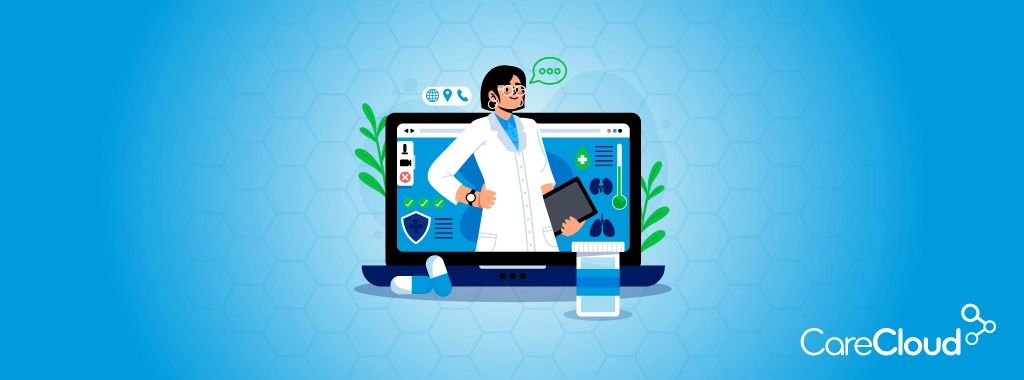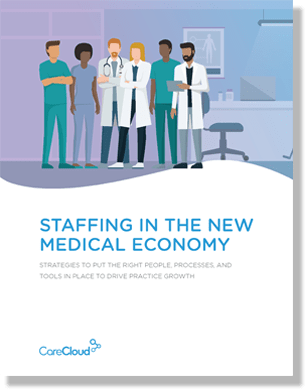Modern healthcare is about more than just treatment, it’s about building trust, delivering personalized care, and ensuring no patient falls through the cracks. Electronic Health Records (EHR) software is becoming essential because it brings all patient data together in one secure place, allowing providers to collaborate easily and make informed decisions that truly improve patient outcomes.
Healthcare professionals in today’s era require more than digitized files. They require instant access to patient information, smooth care coordination among the care team, and smart insights that enhance the outcomes. All of it runs on the engine that is EHR software.
Why EHR Software Is Necessary for Modern Healthcare Providers
In the rapidly changing healthcare landscape of today, Electronic Health Record (EHR) software has advanced from being a useful tool to an outright necessity. Modern providers depend on EHR systems for providing effective, safe, and compliant care while managing more administrative and clinical requirements.
The following are 10 key benefits of why EHR software is a must for healthcare providers in the modern day.
1. Streamlining Clinical Workflows
EHR software is a time saver for providers spending time on manual administrative tasks as it integrates tools for charting, patient registration, scheduling, and order management into a single platform, thus enabling clinicians to spend much less time navigating their daily schedule and instead invest more in serving their patients.
Rather than toggling between paper forms or separate systems, providers enjoy:
- Shared dashboards to monitor tasks and appointments.
- Smart templates for quicker documentation.
- One-click ordering of labs, imaging, and prescriptions.
The outcome is a less burdensome, more streamlined workflow that decreases burnout and increases productivity.
2. Enhancing Patient Care and Safety
Clinical decision-making requires the ability to pay attention to up-to-date information from patients and the accuracy of the information. The providers can view the complete history of the patient, allergies, laboratory work, and previous diagnoses using EHR software immediately. Thus, caregivers can reduce chances of oversight or mistakes.
For instance, a provider can:
- See previous bad drug reactions before prescribing new drugs.
- Review past vitals or lab trends to identify early warning signs.
- Be notified in real-time if a patient’s symptoms indicate a possible emergency.
This results in safer care, less error, and better outcomes.
3. Supportive Data-Driven Decision Making
Modern healthcare thrives on data-and EHRs are the principal sources. Collection and analysis of clinical data through an EHR system are intended to facilitate the making of smarter, evidence-based decisions by clinicians.
EHR can:
- Recognize patterns in chronic conditions.
- Point out abnormalities in lab ranges.
- Suggest care pathways in reference to previous outcomes.
For practices engaged in value-based care or quality initiatives, this ability to use data effectively is critical for both improving care and meeting performance goals.
4. Compliance and Regulatory Requirements
Healthcare is practically the most regulated industry; noncompliance costs plenty of money and reputation. EHR software allows practices to stay aligned with laws and policies.
It encompasses the compliance in the following ways:
- Ensures secure access to sensitive patient information (HIPAA).
- Maintains comprehensive audit trails of all activity in the system.
- Provides structured templates that are compliant with CMS and quality programs.
Whether it’s Meaningful Use, MIPS, or HIPAA, EHRs automate much of the documentation and reporting needed for federal compliance.
5. Enhance Care Coordination Among Providers
The most important advantage of EHRs is how they promote teamwork among providers, either at the level of the individual clinic or across a wider level.
Providing access to the patient information for all members of the care team leads to:
- Less duplicative testing or conflicting medications.
- Better handoffs between specialists and PCPs.
- Faster, more accurate diagnosis based on shared history.
For example, the primary care provider can refer a patient to a cardiologist while instantly transmitting the patient’s history, medications, and pertinent test results, without printing, scanning, or faxing anything in between.
6. Patient Engagement Through Portals
Today, patients expect digital convenience, and patient portals connected to EHRs do precisely that. They provide patients with a greater sense of control over their care journey, thereby increasing satisfaction and compliance.
Examples of standard features of patient portals include:
- Viewing lab results and clinical summaries.
- Scheduling and booking appointments online.
- Secure messaging with providers for non-emergency questions.
- Accessing insurance and billing data.
Patients who are educated and engaged in their own care are more likely to follow treatment and take medications as prescribed.
7. Reducing Medical Errors with Correct Documentation
Medical errors, specifically, those involving handwriting, transcription, or missing information have been a patient safety issue for many years. EHRs significantly reduce these risks by making sure that the documentation is complete, legible, and organized.
For example, instead of interpreting scribbled writing, clinicians can see clear, typed entries with:
- Time-stamped updates
- Standardized diagnosis codes
- Auto-populated fields based on prior entries
- Accessing insurance and billing data
This consistency simplifies it for various providers to get a patient’s case and prevent mistakes, particularly in hectic or speedy care settings.
8. Enabling Real-Time Access to Patient Information
One of the defining features of EHR software is that patient records can be accessed immediately, from essentially anywhere. This is especially important in emergencies or in care across several locations.
Consider the impact:
- On-duty providers remotely log in to review lab results prior to writing a prescription.
- A physician in an urgent care facility is able to see a patient’s complete history from a network hospital.
- House calls and remote consultations are facilitated by mobile-enabled EHR access.
Real-time access makes sure that decisions are made from the most recent, complete information on hand.
9.Supporting Population Health Management
By compiling data from patient populations, EHR software enables providers to determine high-risk groups and apply preventive care measures to enhance general community health.
Key capabilities include:
- Segmentation of patient by conditions, risk level or demographics.
- Tracking preventive care compliance.
- Running reports to identify care gaps and target outreach.
This allows practices to design more intervention and track outcomes over time.
10. Enabling Telehealth and Remote Monitoring
With integrated telehealth features and remote patient monitoring capabilities, EHR software allows care delivery beyond the clinic, providing increased access and continuity of care.
With these features, providers:
- Go through directly from the patient charts.
- Document and bill for remote services within the same workflow.
- Receive real-time data from wearable devices.
The hybrid care model includes for rural or mobility-limited patients while supporting continuous care for chronic conditions.
Final Thoughts
Incorporating the best EHR software is a strategic step for practices aiming to enhance care delivery and optimize operations. Electronic Health Records (EHRs) software not only streamlines clinical workflows but also promotes patient engagement, data security, and billing efficiency.
By choosing the most effective electronic health records software for your purposes, your practice is well-positioned to grow, change, and provide high-quality care in a digital environment.
Frequently Asked Questions
1. What distinguishes EMR from EHR software?
Electronic health records (EHR) software at the time offers one view any patient uses to access the entire cross-sectional history through many clinics. However, access of electronic medical record (EMR) is generally limited within certain practice, without being linked to any outside.
2. How can I find the best EHR software for my small practice?
Looking into easiness of use, specialty-specific functionality, integration with billing and scheduling, and robust customer support is basically the direction. Lastly, it would also encompass availability of cloud access, scalability, and customizable templates in ideal EHR software for small practices.
3. Is it safe to store patient data in an EHR that is cloud-based?
Absolutely, best electronic health record software implements encryption and role-based security to keep information both secure in terms of storage and transmission and compliant with HIPAA. In addition, many cloud models provide automatic backup and disaster recovery.
4. How does the top electronic health records system enhance patient care?
It allows good access to the right information very quickly, reduces documentation mistakes, and makes care coordination easier, with portal contributions from and towards the patients.





